The word “marble” has come from its Latin counterpart Murmur which is known to have been emerged from Greek word Marmorous, referring to shining stone. Marble is primarily known for its amazing hues, easy and uniform texture, excellent hardness, feasibility to be quarried into big-size blocks, even & glossy polished surface, and honeyed feel. Among various dimension stones available today, marble has its own value to its visual and functional characteristics.
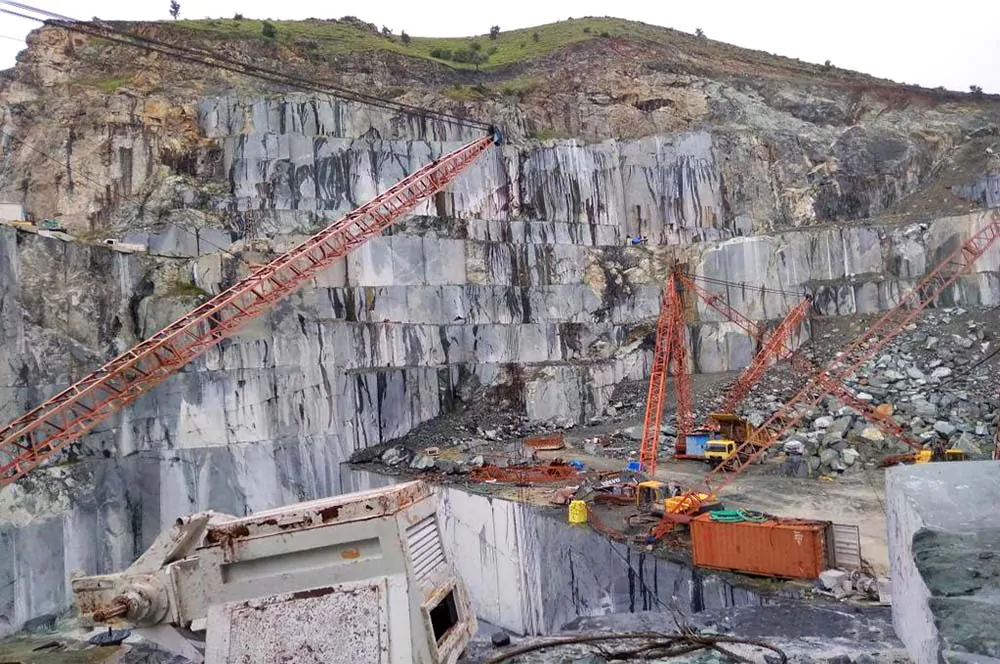
So, it shouldn’t come a big surprise that Indian marble is one of the highly exported dimension stones to US, UK and rest of the world.
On global perspectives, marble is considered a metamorphosed limestone generated through recrystallization under heavy pressure and temperature. In commercial viewpoint, all calcerous are termed as marbles. According to geology experts, serpentine rocks, having a bit of calcium or magnesium carbonates, if visually attractive and capable of embracing good polish are also categorized under marbles. The calcerous stones such as onyx, travertine, and a few types of limestone are also considered marbles.
What are the leading marble resources in India?
Marble is not a major export material just like dimension stones and granite. In India, it always remains in heavy demand due to in-house use and most of the marble production in India is consumed within the country.
The existences of marble have been discovered from various states like Gujarat, Rajasthan, Andhra Pradesh, Haryana, Madhya Pradesh, Maharashtra, Jammu & Kashmir, Sikkim, West Bengal, and Uttar Pradesh. Among the given regions, marble deposits of financial value are contained in Rajasthan, Haryana, Gujarat, Madhya Pradesh, and Andhra Pradesh.
Rajasthan has the peculiarity of being the most prominent among various resources of high quality marble in India. Among 32 districts, 20 districts are found to contain marble in one or the other type. The major regions of marble abundance in Rajasthan are: i) Udaipur – Rajsamand – Chittorgarh region; ii) Makrana – Kishangarh region; iii) Banswara – Dungarpur region; iv) Andhi (Jaipur) – Jhiri (Alwar) region; and v) Jaisalmer region.
However, below table highlights the details about various marble reserves in Rajasthan:

The marbles from Rajasthan comes in diverse hues and textures. The Makrana region is world-known for its untainted white crystalline marble. Other diversities discovered in Makrana area are Albeta, Adanga, Dongri Pink, etc. Another region popular for marble mining in Rajasthan is Rajsamand. It produces mainly marbles of off-white and greyish-white color tone. The globally commended variation of green marble emerges from Rikhabdeo-Kesariaji area, which is located 60 km from Udaipur. The green marble contains different shades of green with white and black system. The marble from Babarmal is found to be pink and is sold as Indian Pink. It is a fine-grained tough marble featuring black and white bands. The marble from Bhilwara is usually white to off-white, fine to mild-grained tough marble having black and white veins. The marble from Banswara is white to off-white dolomitic marble and remains soft. It is applied typically for cladding objectives. The white to greyish-white marbles of Jaipur area are being sold under the trade name Andhi Pista, a white marble having green laths of serpentine; onyx; Indo-Italian and Black Marble.
Moreover, several fresh varieties of Indian marble have been brought into the crinkles of cataloguing particularly after the inauguration of new mining region. The major new types classified by BIS are described below:
- Yellow marble from Jaisalmer.
- Pista marble (amphibolite variety) from AndhiJhiri belt, Jaipur, Alwar and Dausa districts, Rajasthan.
- Brown green and golden ultramafics from Dunkar, Churu district, Rajasthan.
- Chocolate-brown and English teak wood marble from Jodhpur district, Rajasthan.
- Parrot green marble from Jhilo, Sikar district, Rajasthan.
- Chocolate-brown or wood-finish marble from Mandaldeh, Chittorgarh district, Rajasthan.
- Purple marble from Tripura Sundari, Banswara district, Rajasthan.
- Blue marble from Desuri, Pali district, Rajasthan.
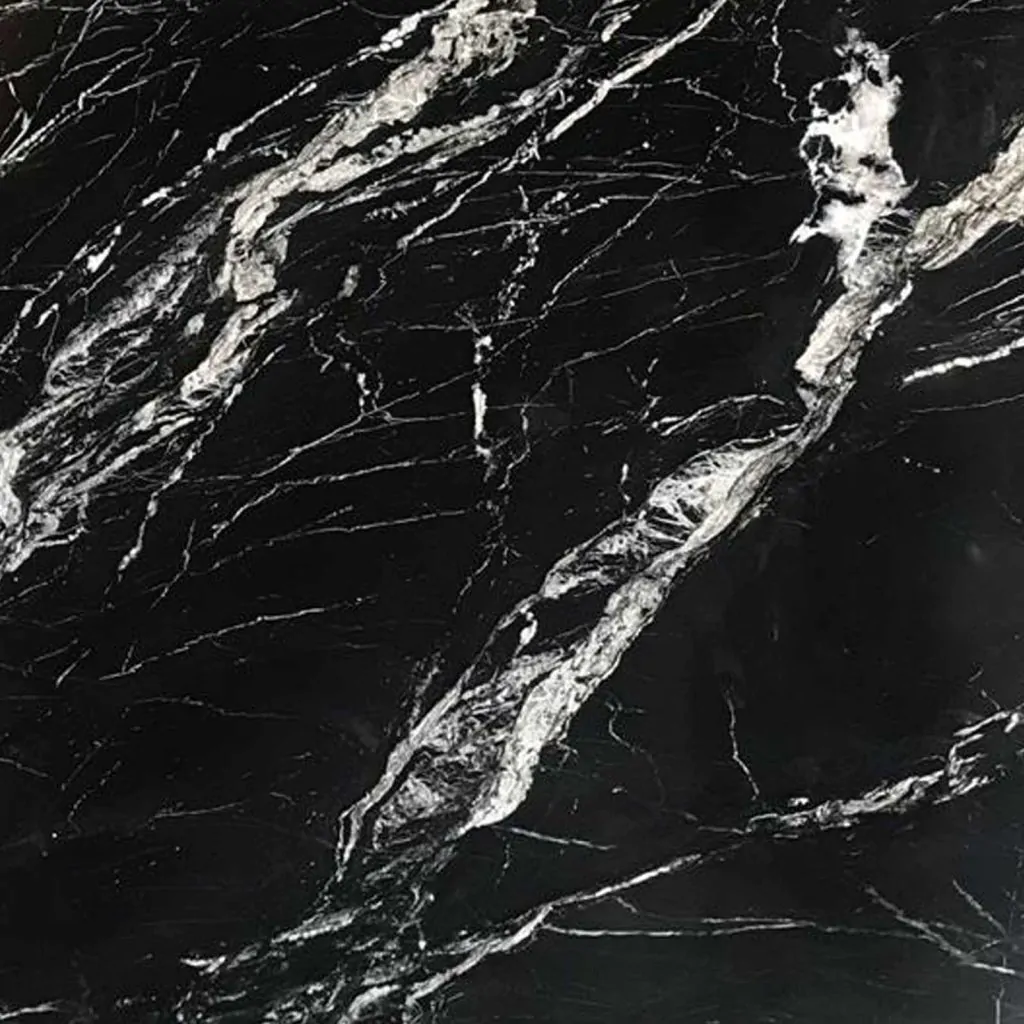
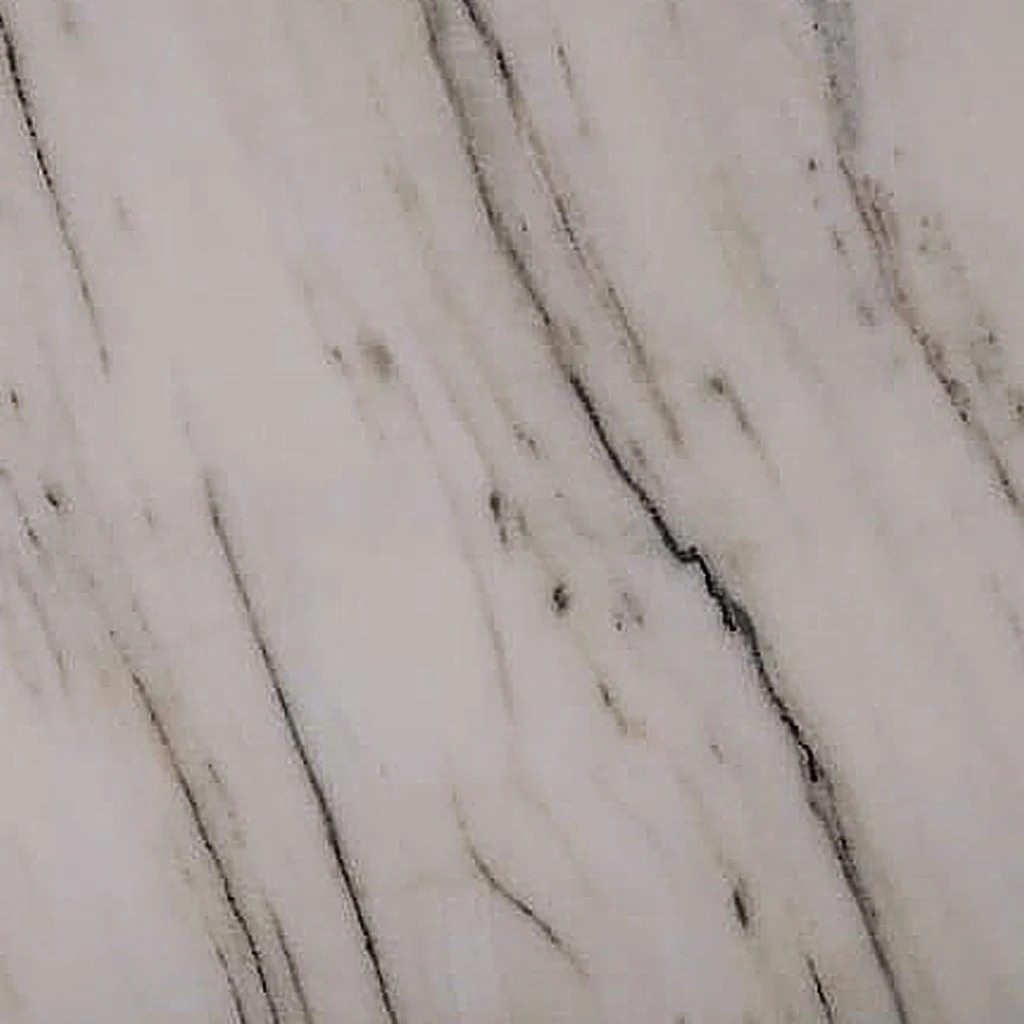


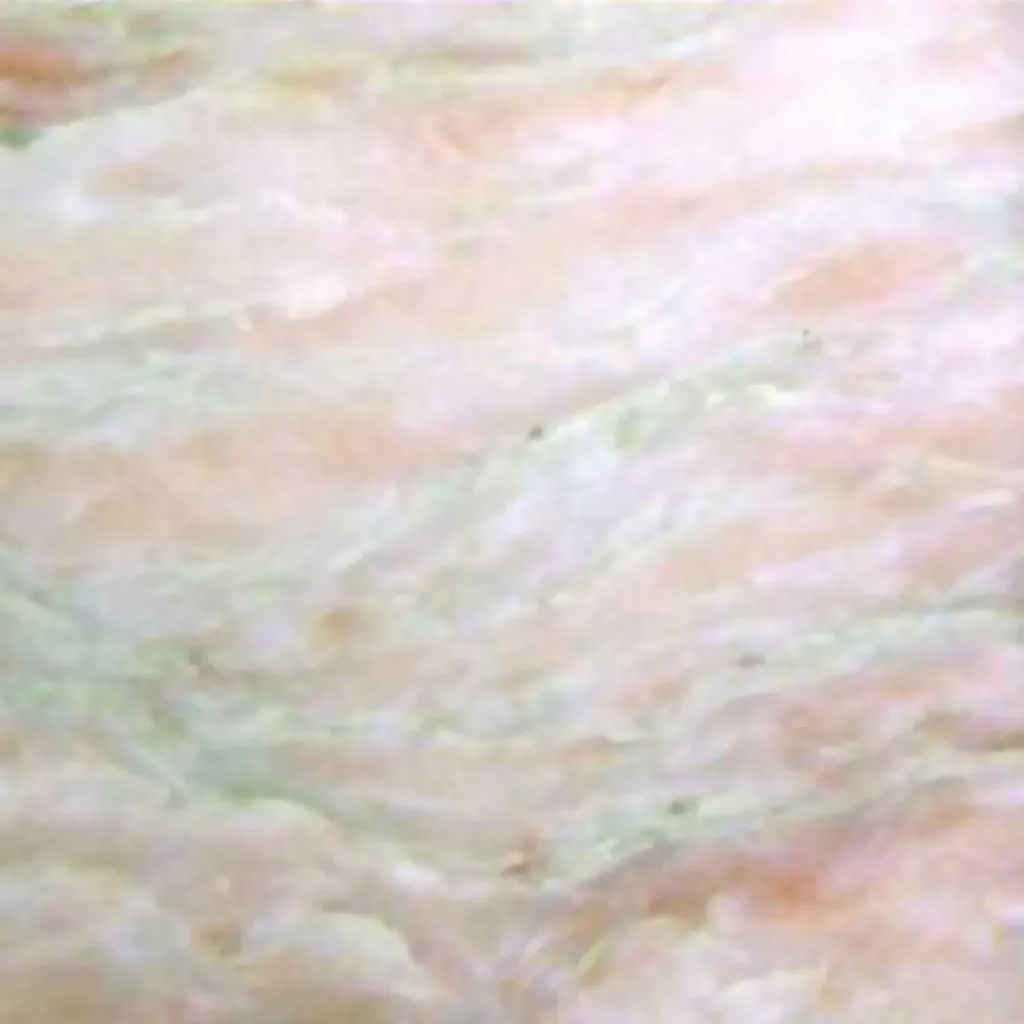

Gujarat has enormous deposits of marble in Banaskantha, Bharuch, Vadodara, Kachchh and Panchmahal region. The Ambaji area in Banaskantha district and Chinchpura area in Vadodara district are the leading marble producing hubs. The white marble of Ambaji is popular for its docility to carving. Other reserves in Banaskantha district are Jarivav, Kumbharia, Kateswar, Bheroj and Khikla. Marble of Vadodara region comes in diverse colors including green, white, pink and cream. Marble of Bharuch differs in color from black to green and red. The yellow marble of Kachchh is thin, occasionally fossiliferous and block-based deposits at Bhulawara-Chinchpura region.
In the state of Haryana, marble reserves are found in Mahendragarh region. Most prominent areas are Antri-Beharipur, Zainpur, ChappraBibipur, Nangaldurgu, Islampur and DhanotaDhancholi. Marble of this area occurs in multi-colored variatns. It relishes the standing as ‘Patiala Marble’ with black and white mobs.
Marble Production
According to the data released by Indian Bureau of Mines, below table illustrates the production of marble in India.
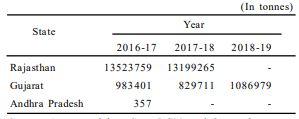
Source: – Indian Bureau of Mines
Indian marble is utilized extensively in buildings, memorials and statuaries. Its helpfulness value rests in its loveliness, forte and confrontation to fire and erosion. Marble has numerous applications in interior and exterior wall cladding, interior and exterior paving, fireplace surrounding and hearth, bathroom countertops, domestic and commercial counter tops, table tops, statues and innovative items.
The other non-conventional applications of marble are in toothpaste, paint, whiting, agricultural lime, etc. Different marble varieties are used basically as both interior and exterior vertical wall cladding and flooring. Their use as structural elements (masonry), statues, epitaphs, graves, etc. is quantitatively less with funeral art accounting for the largest percentage. In interior landscape, such as, for flooring, marble is used in the form of 20 mm thick precisely cut slabs.
The slabs are also used for interior and outer facings, stairs, table tops, kitchen platforms, etc. The tiles in sizes ranging from 10 x 10 cm to 60 x 60 cm are used for floors, dadoes and for skirting in thickness ranging from 10 to 20 mm. The chosen marble blocks with no cracks and other additions are used for preparing artifacts, such as, imprinted figures, railings and handrail for staircases, fire places, vases and several other art pieces.
The existing Indian standards for marbles (blocks, slabs and tiles) are covered under IS: 1130- 1969 (confirmed in 2008).
